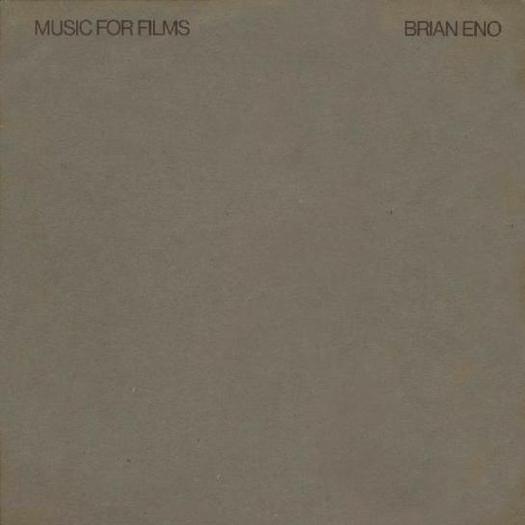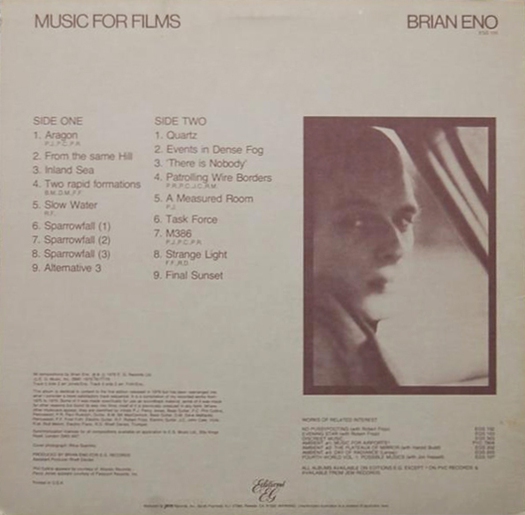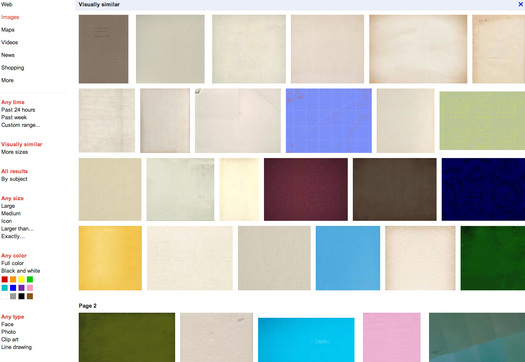Graphic Design • Illustration • Media • Music

July 6, 2012
Brian Eno’s “Music for Films”
This Saturday Design Observer hosts What Design Sounds Like—a conference that looks at the relationship between sound and design. We’re looking back this week at related posts and bring you a few favorites from the archive. Today, Rick Poynor’s well-loved piece on Brian Eno.

Music for Films by Brian Eno, vinyl album cover, E.G. Records, 1978
A very long time ago I wrote the text for a book about Brian Eno. In retrospect, it seems extraordinary that this should ever have happened. I wasn’t a music writer—I wasn’t a published writer at all—and I had no ambition to become a music writer. There were countless super-qualified, Eno-connected music scribes who were naturals to write a book about Eno. (I dare say they thought so too when a book co-authored by a complete unknown came out.)
I was, however, an Eno fan, and had been for about a decade when I started working on the book in 1984, although I had never done anything the slightest bit fannish apart from buying his records as they appeared and reading the spectacularly serpentine interviews he gave to the music press in the 1970s and early 1980s. The music was fabulously smart, of course (I’m not even going to try to convince you of that), but it was the interviews that clinched it for me. Hardly anyone could talk about rock music—where Eno was still semi-reluctantly stationed—like he could. Rock wasn’t even supposed to be talked about with this kind of effortless analytical fluency. It was meant to be emotional, instinctive, a raging, inarticulate force of nature.
Eno had been to art school. He wasn’t alone in that background among English rock musicians (or non-musicians, as he liked to style himself) but the art school experience, the ideas he discovered, public events he organized, and contacts he made there, were central to much of what he had to say about his music. He read books—Man’s Rage for Chaos by Morse Peckham was one he liked to cite—absorbed their ideas, and delighted in regaling interviewers with his latest findings and speculations. Where else would a rock fan get to hear about Norbert Wiener and cybernetics and Stafford Beer’s Brain of the Firm? Perhaps this sounds insufferably pretentious and maybe it was in the context—usually a weekly rock music paper. But the language Eno used was clear as a stream. It was the kind of verbal cleverness that scientists often display. They know the ideas are interesting. There is no need to conceal them beneath a thick foam of jargon.
So, if you liked rock music, art (or the art milieu), and ideas, Eno was your man. I knew I got the tangential art stuff, where perhaps the diehard 1970s rock writers drew a blank, and that emboldened me to think that, maybe, since there was no book about Eno, there was an opening. The precise spur, on holiday in 1983, was finding an Italian paperback published by Arcana Editrice, which featured all Eno’s song lyrics in English. The Italians had got there first. But for the first time, I could study the amazing lyrics, which read like Lewis Carroll on acid at a Surrealist seance, trying his hand at automatic writing. Eno has never done a whole lot to ensure these lyrics from long ago remain part of his story, particularly for listeners who discovered him later through ambient music after he’d stopped writing songs (eventually, when no one expected it anymore, he resumed). I’ll simply say: “Baby’s on Fire,” “The Fat Lady of Limbourg,” “The Great Pretender,” “St. Elmo’s Fire.” There are plenty more. Take a listen.
This is a circuitous way of drawing your attention to the news that John Bertram, LA architect and imaginative organizer of cover design competitions, has come up with a great idea. Bertram wants to receive cover proposals for Eno’s 1978 album Music for Films and is offering a cash prize to the winner. [The winners and commentary from judges appears in this post.] Music for Films is an album of atmospheric instrumental fragments, close in style to the short pieces on Eno’s 1975 masterpiece Another Green World, and it has always been overlooked compared to that album and the albums that introduced ambient music: Discreet Music, Music for Airports and On Land. John has invited me to join the jury, which is a pleasure. The other judges include two notable Enophiles, my friend Russell Mills, who has done some fine album covers for Eno, and asked me to collaborate on the Eno book, and Geeta Dayal, author of the Continuum 33 1/3 volume about Another Green World.

Music for Films, vinyl album, back cover
This might be the perfect cover design challenge since it requires entrants not to replace something that exists with a better alternative, but to imagine something where the album’s creator apparently wanted there to be almost nothing at all. The original 12-inch record cover—don’t be misled by the later CD versions—is a piece of card turned inside out so that the empty, uncoated gray side forms a welcoming tactile sleeve, or as one might see it, a blank screen waiting for the film and the film music to begin; inside the card is smooth, shiny and white. There’s some brown type at the top and someone (I doubt it was Eno) must have specified this, but there’s no design credit on the album, even though the back cover, with a blurred picture of Eno in a car by Ritva Saarikko, his girlfriend at the time, is more obviously designed.

Google search results for Music for Films
Looking for a decent image of the cover online, I discovered just how many shades of printed color it has assumed—ink where there should be nothing. The front cover I show at the top is too dark, perhaps because the exposed cardboard has aged in use. When I put that picture into Google image search, I got back results like a set of color swatches, many not even album-shaped, with every trace of the original record sleeve erased. These tinted glimpses of nothing very obvious struck me as entirely Eno-esque.

Refined Google search results for Music for Films
Observed
View all
Observed
By Rick Poynor
Related Posts

Graphic Design
Sarah Gephart|Essays
A new alphabet for a shared lived experience

Arts + Culture
Nila Rezaei|Essays
“Dear mother, I made us a seat”: a Mother’s Day tribute to the women of Iran

The Observatory
Ellen McGirt|Books
Parable of the Redesigner

Arts + Culture
Jessica Helfand|Essays
Véronique Vienne : A Remembrance
Recent Posts
Compassionate Design, Career Advice and Leaving 18F with Designer Ethan Marcotte Mine the $3.1T gap: Workplace gender equity is a growth imperative in an era of uncertainty A new alphabet for a shared lived experience Love Letter to a Garden and 20 years of Design Matters with Debbie MillmanRelated Posts

Graphic Design
Sarah Gephart|Essays
A new alphabet for a shared lived experience

Arts + Culture
Nila Rezaei|Essays
“Dear mother, I made us a seat”: a Mother’s Day tribute to the women of Iran

The Observatory
Ellen McGirt|Books
Parable of the Redesigner

Arts + Culture
Jessica Helfand|Essays

 Rick Poynor is a writer, critic, lecturer and curator, specialising in design, media, photography and visual culture. He founded Eye, co-founded Design Observer, and contributes columns to Eye and Print. His latest book is Uncanny: Surrealism and Graphic Design.
Rick Poynor is a writer, critic, lecturer and curator, specialising in design, media, photography and visual culture. He founded Eye, co-founded Design Observer, and contributes columns to Eye and Print. His latest book is Uncanny: Surrealism and Graphic Design.